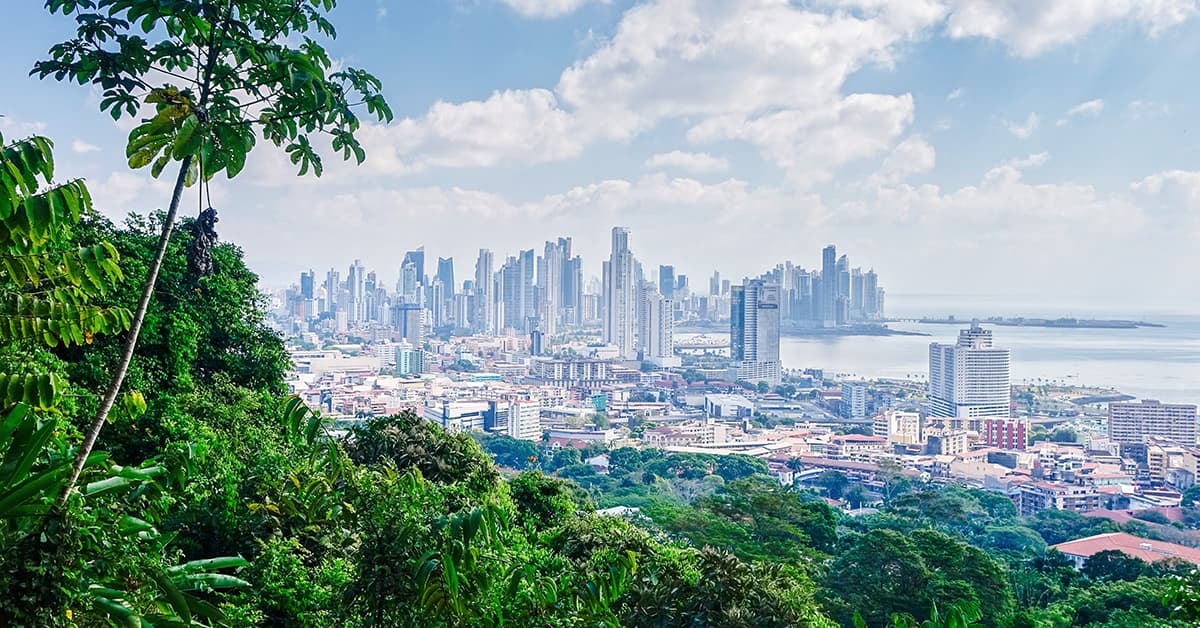Panama is looking to resume healthy growth post-Covid.

|
VITAL STATISTICS |
|---|
|
Location: Central America |
|
Neighbors: Colombia, Costa Rica |
|
Capital city: Panama City |
|
Population (2021): 4,371,624 |
|
Official language: Spanish |
|
GDP per capita (2019): $15,731 |
|
GDP growth (2020): -17.9% |
|
Inflation (2019): -0.4%+ |
|
Currency: Balboa, pegged to the US dollar |
|
Investment promotion agency: Panama Trade and Investment Agency (Proinvex); National Authority for Investment Attraction and Export Promotion |
|
Investment incentives available? Tax credits, free zones, some exemptions from import duties, fixed corporate tax rate at 25% |
|
Ease of Doing Business rank (2020): 86 |
|
Corruption Perceptions Index rank (2020): 111 |
|
Political risks: Political situation is stable |
|
Security risks: Crime in Panama City, Colón and near Colombian border; poor road safety. |
|
PROS |
|---|
|
Strategic geographic position |
|
The canal |
|
Government makes no distinction, usually, between domestic and foreign companies for investment purposes |
|
Dollar-driven economy |
|
CONS |
|---|
|
Slow and inconsistent judicial system |
|
Corruption and patronage |
|
Weak education and vocational training |
|
Poor resolution of property-rights disputes |
|
Exposed to economic and political situations of its neighbors |
|
Sources: Franchise Times; Government of Canada, Global Travel Advisory; Government of Panama, National Institute of Statistics and Census; Heritage Foundation; International Monetary Fund; Lloyds Bank; PwC; Reuters; The Tico Times; Transparency International; US State Department; World Bank; World Population Review |
|
For more information, check out Global Finance‘s Panama Economic Report data page. |
Panama’s GDP shrank nearly 18% in 2020, according to the World Bank. “The pandemic had a significant impact on the country and its economic outlook,” says Silvana Amaya, senior analyst in global risk at Control Risks in Bogotá, Colombia.
Yet the government hopes its recovery plan, building on its status as a regional and global logistics hub centered on the Panama Canal, will curb unemployment and attract investment enough to hit 9% growth in 2021 and return to pre-pandemic levels of around 5% in 2023.
The optimism appears reasonable, given Panama’s strengths. The country’s dollarized economy rests on the service sector—notably including canal operations, banking, tourism, and logistics—which accounts for more than three-quarters of GDP. “That makes it very different from other economies in Latin America,” says Renzo Merino, vice president and senior analyst on Latin America at Moody’s. Most Central American economies rest on commodities.
In 2019, according to Panama’s National Institute of Statistics and Census, 37.1% of net FDI inflows came from Canada, followed by Colombia with 25.1%.
Geopolitical Shifts
Presently, the reshaping of supply chains driven by worsening US-China relations and the pandemic may benefit Panama. The prospects of “nearshoring” some production could entice new investment to Panama, Merino explains. He adds that the country would need to build capacity and prepare its labor force to take advantage of the increase.
Panama’s advantages include political stability and a mindset that transcends political parties. “Regardless of who forms the government, all parties have the same attitude towards business,” Amaya says. Its advantages have attracted an array of blue-chip multinational companies, including Microsoft, Dell, Bayer, Johnson & Johnson, Procter & Gamble, Nestle and BMW.
When the pandemic fades, sectors such as logistics related to the canal, tourism and infrastructure projects—including roads and metro lines in Panama City—will bounce back with investment prospects. “Clearly over the coming year, there will be opportunities for international companies,” Merino says.
Notwithstanding Panama’s advantages and opportunities, investors face significant challenges, including competition from the People’s Republic of China. Washington-based conservative think tank The Heritage Foundation warns that “any move by China to exploit Panama’s current economic downturn and its weak underbelly of corruption poses a threat not just to Panama, but also to all countries that depend on open access to the canal.”
Moreover, Merino warns that investors should factor potential tax changes into their plans. As a consequence of the pandemic, the Panamanian government, like many others, may feel forced to revise its tax structure to increase revenue.



